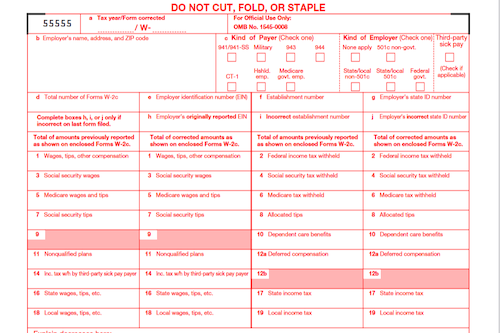Failing to pay estimated taxes to the IRS correctly can result in penalties – but what if you can’t afford them? Find out how IRS Form 2210, Abatement Services, and more can help alleviate the penalties of underpaying estimated taxes.
What is Form 2210?
IRS Form 2210 serves to calculate a penalty for underpaying estimated taxes. Most business owners, freelancers, and independent investors pay estimated taxes four times a year, due April 15, June 15, September 15, and January 15 (or by July 15 during extraordinary circumstances such as 2020). Individuals with AGI exceeding $150,000 must pay either 90% of the current year’s income tax liability or 110% of the previous year’s income tax liability to stay in compliance with the IRS. Taxpayers who don’t meet these requirements face IRS penalties and can refer to IRS Publication 505 and Form 2210 to determine the amount owed.
IRS Form 2210 – Who Needs to Fill It Out?
When it comes to estimated taxes, those best suited are business owners, those with significant income from investments, estates, or trusts, as well as farmers and fishermen. Their income does not include regular paychecks that are subject to withholding, so estimated payments occur quarterly. Those who underpay, fail to pay, or pay late may have to pay a penalty, and to calculate the penalty, you might be required to fill out IRS Form 2210. The four payment deadlines are April 15, June 15, September 15, and January 15 (the following calendar year). The form helps you calculate the amount you owe in late penalties and makes sure you are in compliance with the IRS. To avoid estimated tax penalties, you must meet the payment deadlines and pay in full. If you cannot come up with the funds by the deadlines, you can consider filing Form 4868. Taxpayers with a substantial income must pay either 90% or 110% of the current or previous tax year’s liability. To learn more, you can refer to IRS Publication 505.
Step-by-Step: Form 2210 Instructions For Filling Out the Document
Filling out IRS Form 2210 is an important step for underpaying estimated taxes, as it will allow you to calculate the applicable penalty. Although the form’s instructions may be intimidating, it’s essential to pay your estimated taxes on time in full to avoid any IRS penalties. Form 2210 has two primary methods for filing, the short method, which applies in cases where estimated tax payments are made on-time in full, or the regular method, which applies in cases where payments were late, certain boxes were checked in Part II of Form 2210, or Form 1040-NR is being filed without applicable wages. The IRS also offers the option of consulting Publication 505 for an in-depth look at pay-as-you-go taxes, withholding, and estimated taxes, as well as the possibility of appealing a penalty with Form 843 or making use of the first-time penalty abatement or reasonable-cause argument. Ultimately, the best way to avoid a penalty is to pay on-time and in full, as prevention is better than cure.
Below, we present a table that will help you understand how to fill out Form 2210.
| IRS Form 2210 Filing Methods | Details |
|---|---|
| Short Method | Applies when estimated tax payments are made on-time in full. |
| Regular Method | Applies when payments were late, certain boxes were checked in Part II of Form 2210, or Form 1040-NR is being filed without applicable wages. |
| Additional Resources | – Consult Publication 505 for in-depth information on pay-as-you-go taxes, withholding, and estimated taxes. – Consider appealing a penalty with Form 843. – Explore the first-time penalty abatement or reasonable-cause argument options. |
| Prevention | The best way to avoid a penalty is to pay estimated taxes on-time and in full, as prevention is better than cure. |
Do You Need to File Form 2210 Each Year?
Failing to pay your estimated taxes on time, underpaying them, or missing the filing deadline can all result in penalties from the IRS, and filing Form 2210 is the most effective way to calculate this amount. Before you have to file the form, you should understand the estimated tax requirements and make sure to pay on time with the correct amount. Famers and fishermen are exempt from the estimated tax requirements and can avoid the penalties if they pay their taxes in full by March 1. Form 2210 outlines the various requirements to stay in compliance with paying your estimated taxes; these include the due dates (April 15, June 15, September 15, and January 15) and making sure you at least pay 100% or 110% of the previous tax year’s income tax liability, depending on the size of your adjusted gross income. You should also consider filing Form 4868 to extend the deadline for your tax return in case extenuating circumstances arise that prevent you from timely filing your taxes. Ultimately, prevention of penalties is the goal of the taxpayer and understanding the estimated tax requirements is the best way to achieve this.
Download the official IRS Form 2210 PDF
On the official IRS website, you will find a link to download Form 2210: Penalty for Underpaying Taxes. However, to make it easier for you, we are providing the link in our article, which comes directly from the official irs.gov website! Click to download: Form 2210
Sources:
https://www.irs.gov/forms-pubs/about-form-2210
https://www.irs.gov/instructions/i2210




